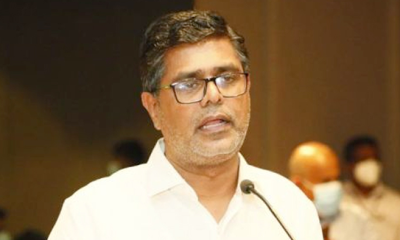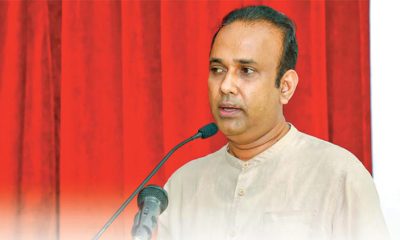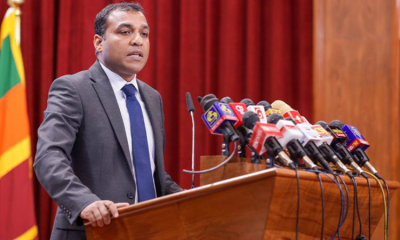Sports
Schools cricket’s age limit change from Under-19 to 20 just not numbers
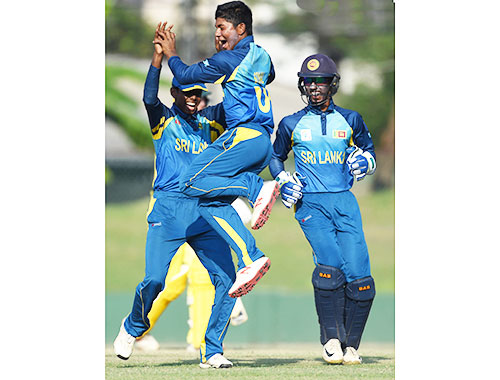
Will a change of age limit benefit cricketers aspiring to represent the country at the ICC Youth World Cup where Sri Lanka is the only Test playing nation in the South Asian region to have not tasted victory in this more than three decades old tournament.
by Reemus Fernando
Schools cricket has been in limbo for more than six months now due to the Covid 19 pandemic. Though there had been no action discussions were underway to find means of improving standards. One of the suggestions received by an eminent panel consisting of former national cricketers is to change the age limit of the premier schools cricket tournament from Under-19 to Under-20. When some school sports, including rugby and track and field have Under-20 as their highest age group then why not cricket? Will a change of age limit benefit cricketers aspiring to represent the country at the ICC Youth World Cup where Sri Lanka is the only Test playing nation in the South Asian region to have not tasted victory in this more than three decades old tournament.
“There is something wrong in our system. Former Sri Lanka Under-19 coach Naveed Nawaz could guide Bangladesh to Youth World Cup victory. It was something he could not do with a team here. You have to seriously take note of our Under-19 cricket structure. An age limit change will help our young cricketers get mature. It will also help reduce the gap between the Under-23 tournament conducted by Sri Lanka Cricket and the highest age group tournament of the schools association,” says Dinesh Kumarasinghe, the head of Sports of S. Thomas’ College, Mount Lavinia. Kumarasinghe has been involved in schools cricket as a coach for nearly three decades now.
The suggestion to change the age limit is learnt to have come from influential schools cricket coaches who are eager to make amends for dropping standards.
It is not the first time that such a change had been suggested. Four years ago the Ministry of Education changed the age limit only to withdraw the circular within months for reasons best known to them.
The last time the tournament had been played as an Under-20 tournament was nearly one and a half decade ago. It is widely believed in schools cricket circles that the change (to Under-20) was to facilitate a politico’s son to captain his alma mater. That Under-20 rule lasted only a year and the tournament reverted to Under-19.
“The suggestion to increase the age limit to Under-20 had been opposed vehemently at SLSCA meetings on many previous occasions due to the administrative difficulties and problems relating to maintaining discipline,” a former official of the SLSCA says.
Currently the Under-19 tournament is played by cricketers who are not over the age of 20 on September 1 of the concluding year of the tournament. Unlike tournaments of other sports cricket’s highest age group tournament had been played for decades from September to April.
“Though the tournament is called Under-19, we have players over the age of 19 when the tournament concludes in April. It is actually an Under-20 tournament already. Why do you need to further extend it,” a former official of the SLSCA questions.
If not for the Covid 19 pandemic the 2020/21 Under-19 tournament would have commenced by now with players born after September 1, 2001 being eligible to compete. Which means some players would be already 19 plus when the tournament starts.
Those who are pushing for the change argue that by extending the age limit (from September 1 to April 1) more players, who are still in school would be eligible to compete.
When contacted, Thilak Waththuhewa, the president of the SLSCA said that the proposal to extend the age limit will soon be discussed at the SLSCA Executive Committee meeting and the decision will be known sooner rather than later.
A former official who had served at the SLSCA when the age limit was extended to Under-20 one and half decades ago said that a number of schools found it difficult to address discipline issues that year. “We received complaints against players who had already found employment at private firms still playing for schools,” says the former official.
However, this time the decision to change the age limit has been put forward for discussion and a knowledgeable panel of former cricketers are considering the pros and cons. Enthusiasts believe that the decision would be taken with the best interest of country’s cricket in mind.
It should be noted here that the ICC’s Under-19 age limit date for the Youth World Cup is also compatible with Sri Lanka’s schools tournament age limit date of September 1.
Sports
England face Australia in the battle of champions
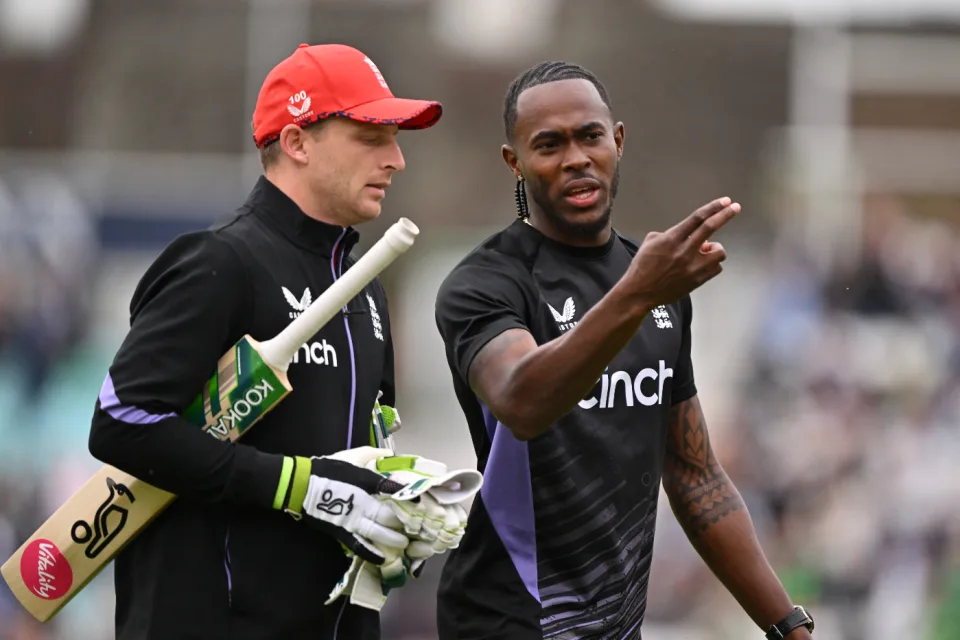
The first truly heavyweight clash of this expanded T20 World Cup format comes freighted with both history and subplots. A rematch of the 2010 World T20 final at Kensington Oval, the match pits Jos Buttler’s defending champions – who are aiming to become the first team to retain the trophy – against the Australian winning machine, victors at the 2021 edition and current world title-holders in Test and ODI cricket. And that’s before you throw in the Ashes for afters.
Already there is added pressure on England, after the rain in Bridgetown led to a share of the points in their opener against Scotland (and that having conceded 90 runs from 10 overs without taking a wicket in a tepid bowling display). Lose to their oldest rivals and it will leave their Super 8 prospects open to being waylaid by the perils of net run-rate calculations, or worse.
The Scotland match was the third abandonment in five suffered by England, after a rain-affected home series against Pakistan, which has clearly hampered their readiness for this campaign after almost six months without playing T20 together. It does not take much for a side to click in this format – and England looked in decent shape when they did get on the field against Pakistan – but Buttler will be anxious for things to go their way on Saturday, if only to avoid further questions referencing the team’s disastrous ODI World Cup defence last year.
Australia, under the laidback leadership of Mitchell Marsh would love nothing more than to add to the English sense of jeopardy – having helped bundle them out of the tournament in India on the way to taking the crown. Their head to head record is less impressive in T20 however, with England having won six of the last seven completed encounters, as well as that 2010 final.
Despite a wobble with the bat, Australia avoided mishap against Oman earlier in the week, the experience of David Warner and Marcus Stoinis shining through in difficult batting conditions. Surfaces in the Caribbean – not to mention those games staged in the USA – have already had teams scratching their heads; rather than the “slug-fest” England had prepared for, following a high-scoring tour of the Caribbean in December, it looks as if boxing smart may be the way to go.
Speaking of Warner, this could be the last time he faces up against England in national colours – and another match-winning contribution would likely reduce the chances of them meeting again in the knockouts. On the other side of the card is Jofra Archer, fresh from an emotional maiden outing at Kensington Oval and ready to take on Australia for the first time in any format since 2020. Can Mark Wood fire up England’s campaign, as he did during last summer’s Ashes? Will Pat Cummins be back to harass the old enemy once again? Seconds out, it’s almost time to rumble.
Cummins is set to return after being rested for the Oman game, which saw Mitchell Starc leave the field with cramp. Starc is understood to be fine and could keep his place – which would likely see Nathan Ellis miss out. Marsh is still not fit to bowl, with Australia likely to continue with the allrounder combination of Stoinis and Maxwell to give them cover.
Australia (probable XI): David Warner, Travis Head, Mitchell Marsh (capt), Glenn Maxwell, Marcus Stoinis, Josh Inglis (wk), Tim David, Pat Cummins, Nathan Ellis/Mitchell Starc, Adam Zampa, Josh Hazlewood
The one change England may consider is Reece Topley coming in for Wood, with the expectation that there will be some rotation among the seamers through the course of the tournament.
England (probable XI): Phil Salt, Jos Buttler (capt & wk), Will Jacks, Jonny Bairstow, Harry Brook, Liam Livingstone, Moeen Ali, Chris Jordan, Jofra Archer, Adil Rashid, Reece Topley/Mark Wood
[Cricinfo]
Sports
South Africa up against their bogey team in batter-unfriendly New York
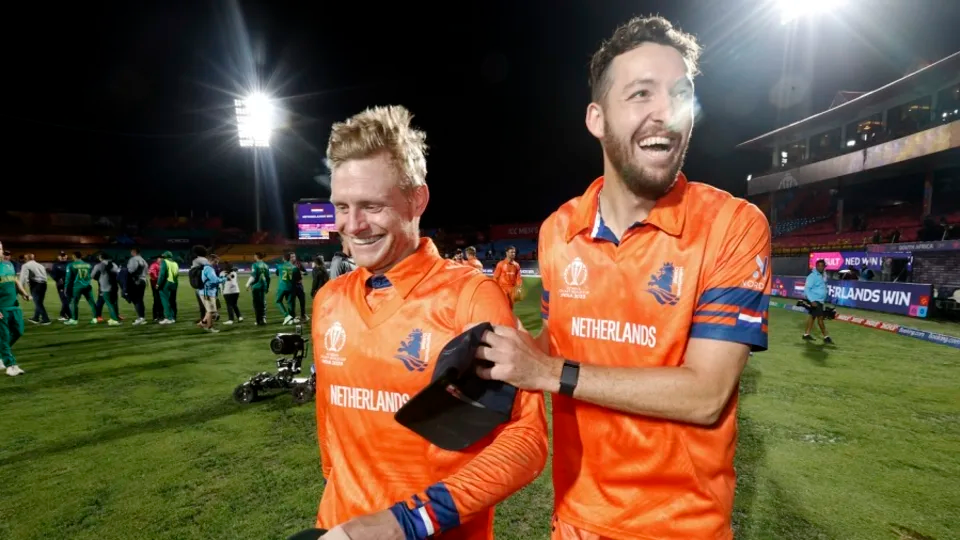
Once is coincidence, twice is a clue, and three times is proof.
To paraphrase Agatha Christie, that is the narrative around South Africa’s meeting with Netherlands at this T20 World Cup.
The Dutch beat South Africa at the 2022 tournament and ended their semi-final hopes in a match where South Africa appeared to be sleep walking, and then beat them again at the 2023 ODI World Cup, where they exposed South Africa’s vulnerability in the chase. If they to do the treble, not only will Netherlands take the lead in Group D, but they will offer conclusive evidence of the threat they pose to Full Members, especially South Africa.
Of course, it will take some doing after South Africa’s opening performance against Sri Lanka, where they reduced their opposition to their lowest T20I total and chased it down in fairly straightforward fashion thanks to the most stable middle-order of their white-ball era. In Aiden Markram, Tristan Stubbs, Heinrich Klaasen and David Miller, South Africa have bankers and big-hitters and, for this match, they also have the advantage of experience. They’ve already played at Eisenhower Park, and have first-hand knowledge that run-scoring doesn’t come easily;Klassen said they are prepared to use their “cricket brains” and play “smarter cricket”.
But the conditions could be good news for Netherlands, who are not naturally a line-up of big hitters and build their innings on a foundation of turning ones into twos. In other words, they tend to take a slightly more conservative approach to batting, which may work well here, but they’ll be wary of the uneven bounce of the surface and will have to come up with plans to counterattack especially against South Africa’s seamers. Their own bowlers were exemplary in Dallas and will look to build on that performance against a line-up that will likely be more proactive than Nepal’s, but who they have managed to keep quiet not once, but twice in the past. Third time’s the charm, they say.
Anrich Nortje’s stunning return to form against Sri Lanka means South Africa may not have to tinker with the bowling combination, and Gerald Coetzee and Tabraiz Shamsi may have to wait their turns to get a game. The batting line-up should be unchanged, with no space for Ryan Rickelton yet.
South Africa: Quinton de Kock (wk), Reeza Hendricks, Aiden Markam, Tristan Stubbs, Heinrich Klaasen (wk), David Miller, Marco Jansen, Keshav Maharaj, Kagiso Rabada, Ottneil Baartman, Anrich Nortje
Conditions in New York may tempt Netherlands to include an extra seamer and they have Kyle Klein in their squad. But it could come at the expense of a shortened batting line-up and they may not want to risk that.
Netherlands: Michael Levitt, Max O’Dowd, Vikramjit Singh, Sybrand Engelbrecht, Scott Edwards (capt, wk), Bas de Leede, Teja Nidamanuru, Logan van Beek, Tim Pringle, Paul van Meekeren, Vivian Kingma
[Cricinfo]
Latest News
Mustafizur, Rishad, Hridoy dazzle in Bangladesh’s tight two-wicket win over Sri Lanka
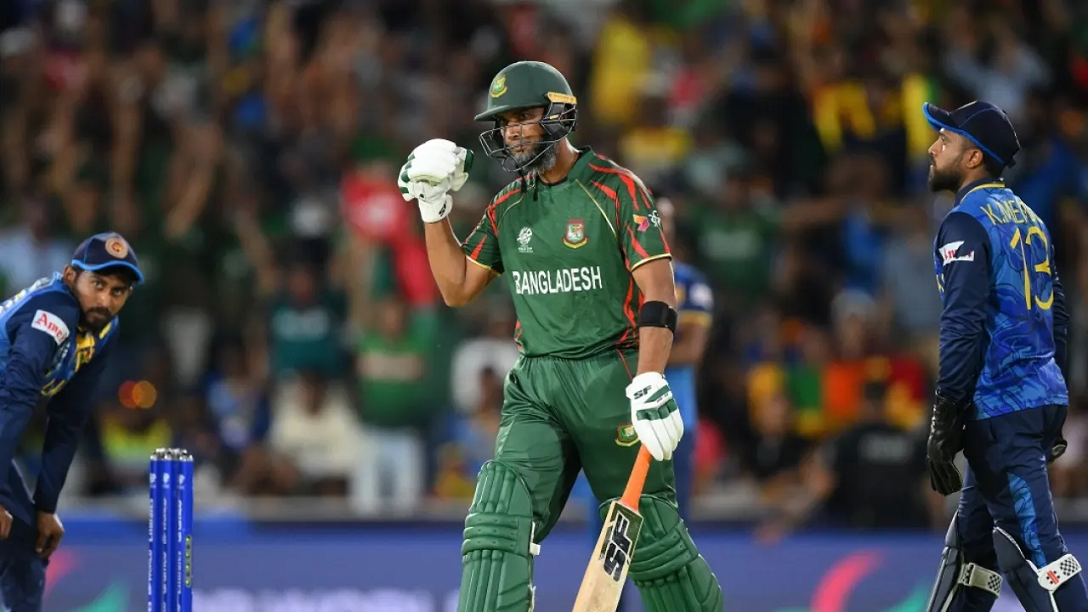
Nuwan Thushara’s last over brought Sri Lanka screaming back into the match,as he first bowled Rishad Hossain, and then nailed Taskin Ahmed in front of the stumps with a pinpoint swinging yorker. This left Bangladesh eight wickets down, with 12 runs still to get.
However, the experienced Mahmudullah was at the crease for Bangladesh, and despite some further nervy moments, pushed Bangladesh across the line off the last ball of the 19th over.
But this was a match chiefly decided by Bangladesh’s own outstanding bowling. Mustafizur Rahman was the best among them, using shorter lengths and his cutters efficiently, to claim figures of 3 for 17. Rishad Hossain’s three-for through the middle overs also kept Sri Lanka quiet.
Mustafizur was instrumental in Sri Lanka’s downward spiral through the middle overs, which culminated in a crash-and-burn end. Ultimately, their inability to find boundaries, or even rotate strike against good Bangladesh bowling resulted in their downfall. A score of 125 for 9 always seemed poor on a decent pitch, even if their bowlers made a match of it in the end.
Brief scores:
Bangladesh 125 for 8 in 19 overs (Towhid Hridoy 40, Litton Das 36; Dhanajaya de Silva 1-11, Nuwan Thushara 4-18, Wanidu Hasaranga 2-32, Matheesha Pathirana 1-27) beat Sri Lanka124 for 9 in 20 overs (Pathum Nissanka 47, Dhananjaya de Silva 21; Tanzim Hasan Sakib 1-24, Taskin Ahmed 2-25, Mustafizur Rahman 3-17, Rishad Hossain 3-22) by two wickets
[Cricinfo]




